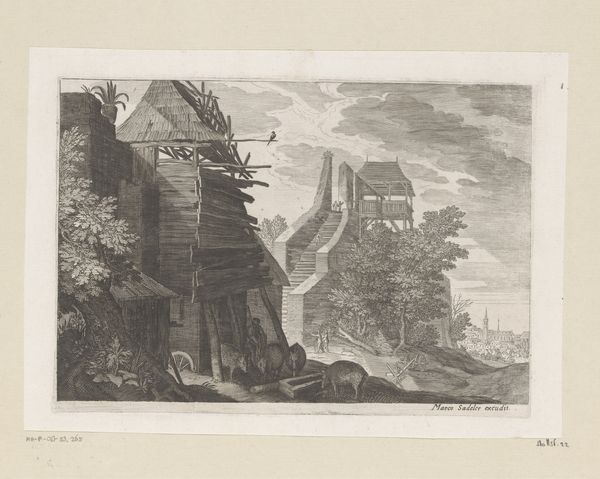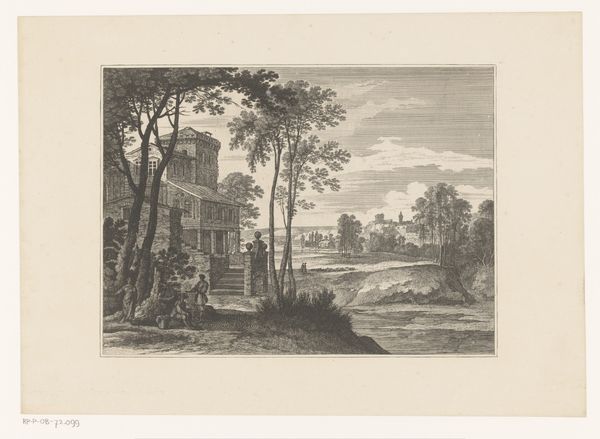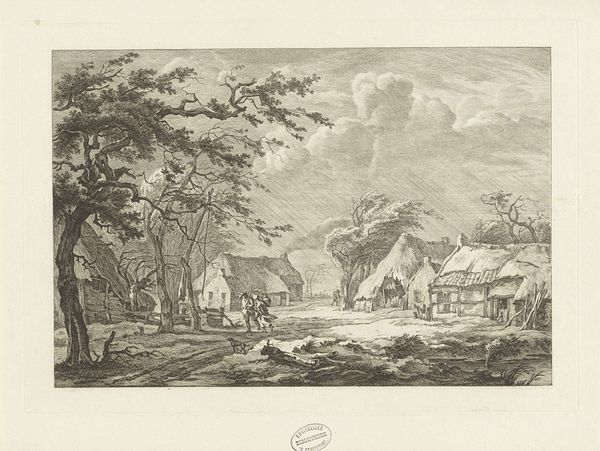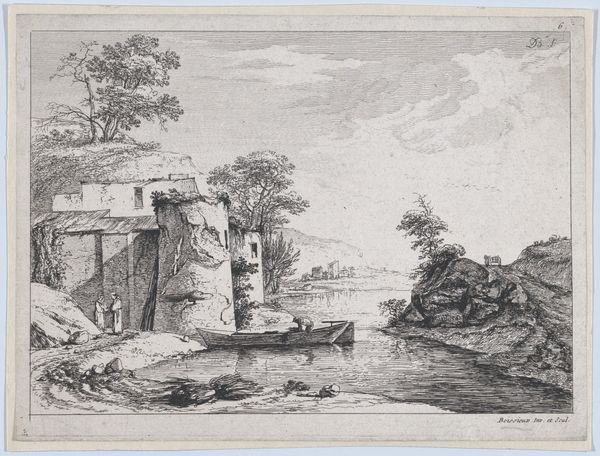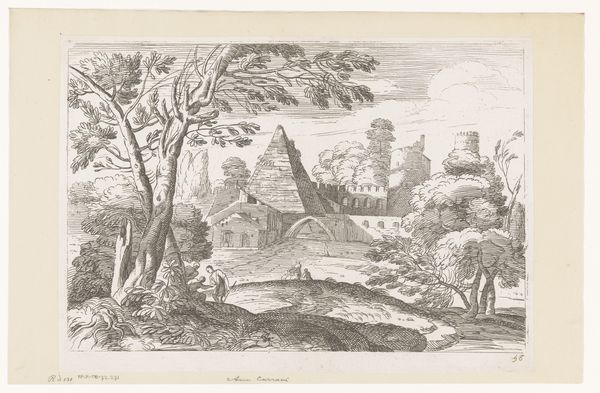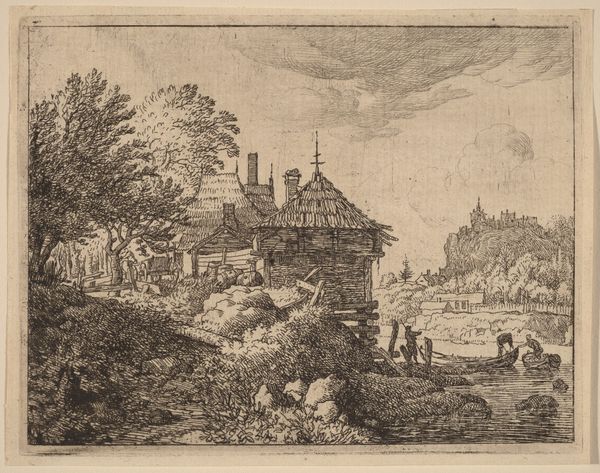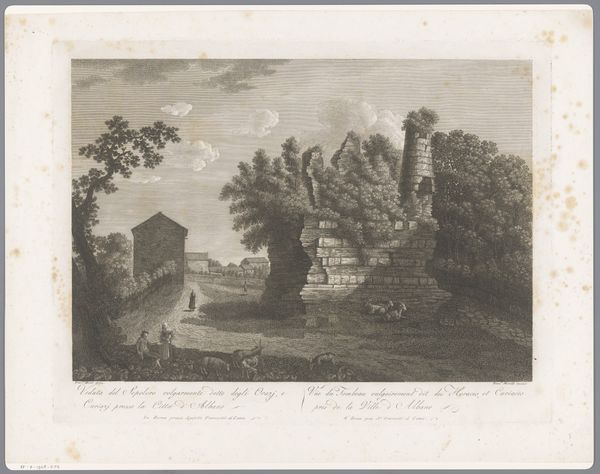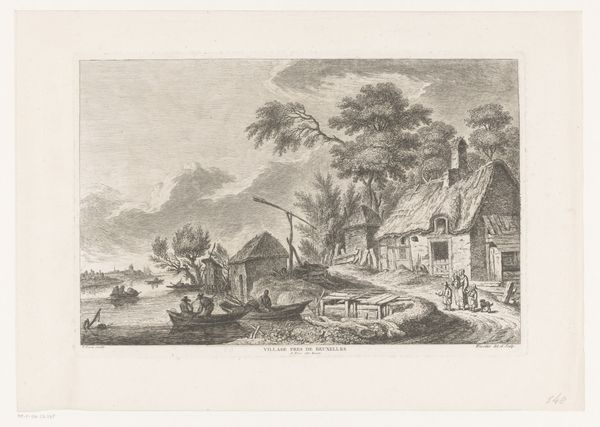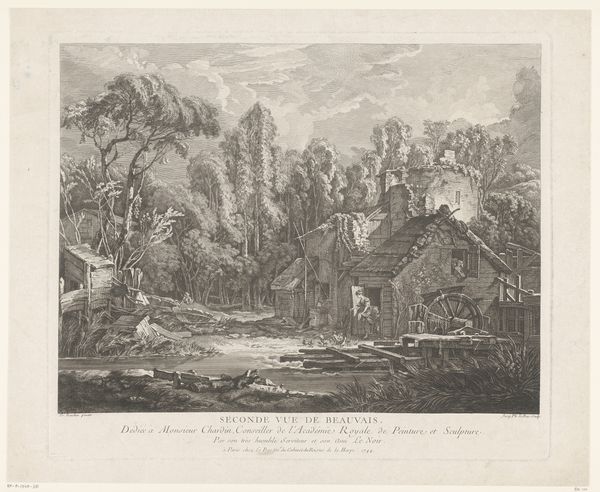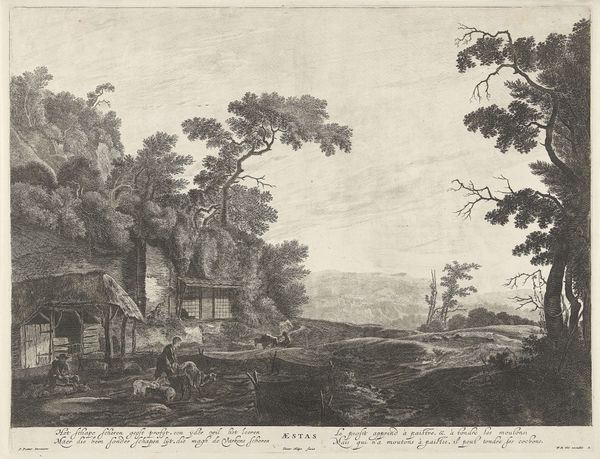
Dimensions: height 281 mm, width 367 mm
Copyright: Rijks Museum: Open Domain
Curator: Before us is an engraving titled "Houten huizen aan het water", which translates to "Wooden Houses by the Water". It's an anonymous work, dating somewhere between 1750 and 1799. Editor: It’s immediately striking how the building dominates the foreground; its precarious lean evokes a sense of impermanence. A sort of dilapidated existence right by the waterside. Curator: Precisely. That "dilapidated existence" speaks to the social realities of the time. The baroque style, though visually pleasing with its detail, often obscures the lived experiences of the lower classes. Editor: How so? Is there evidence of a sociopolitical agenda at play here? Curator: The choice to depict what appears to be a modest dwelling challenges the idealized landscapes often presented in art of that era. This depiction perhaps subtly critiques the concentration of wealth and power by portraying more “humble” living conditions. It questions who is seen, and valued, in art and in society. Editor: I agree; there's a vulnerability embedded in this landscape, an openness to interpretation regarding what is deemed 'beautiful'. But it still makes one consider the socio-economic forces determining such scenes. Were they a direct response or a quiet commentary on inequalities, or an acceptance? Curator: The artist, whomever they were, is certainly placing this scene within the discourse of the time, shaping how these images enter the cultural consciousness, reinforcing or questioning social structures depending on who commissioned the art, or who circulated the print. It’s interesting how that old engraving style becomes another layer in unpacking this image! Editor: The composition definitely compels us to acknowledge the relationship between the people inhabiting those wooden structures and their proximity to nature's ever-changing rhythms, a dance with both resilience and vulnerability. That dialogue—that visual conversation about art's impact on perceptions and power is compelling to consider! Curator: Indeed. Considering its context, we see "Houten huizen aan het water" not just as an anonymous 18th century engraving but as a reflection of historical forces shaping social landscapes. Editor: A landscape silently challenging our gaze to reconsider, or perhaps not!, the stories they tell.
Comments
No comments
Be the first to comment and join the conversation on the ultimate creative platform.

